The first day aboard the Jahan begins with an early-morning Tai Chi session on the Terrace Deck. It’s led by a young Cambodian woman who executes the forms with a ballet dancer’s grace. The eight or ten passengers who try to follow her, including me, look as if they might be a tad drunk, or suffering from joint ailments. But it’s quite pleasant on deck in the open air. The Southeast Asian sun is about two hours away from delivering its stunning blows.
Despite the early hour, the Mekong is alive with activity. Every kind of vessel is plying upriver and down: small dugouts paddled by one or two people; larger sampans powered by marine engines attached to the upper end of very long shafts (to allow the pilot to raise the prop when passing over shoals); fishing boats with big eyes painted on the bows to ward off evil spirits; barges 100-feet long, sunk to the gunwales by their huge loads of Mekong River silt (which is exported to places like Singapore for landfill). Both banks are lined with villages, one after another, clay-tile and sheet-metal roofs showing through bamboo groves, tall teak trees, and mango orchards, the fruits covered by white sacks to protect them from birds and insects. Fish farms crowd the shores. Each one consists of a house boat floating on fifty-gallon drums above pens 30 feet deep holding thousands of red tilapia and catfish. Some are raised for local consumption, most for export. When they’re big enough (it takes 10 months to raise a fish from a fingerling to two pounds), the fish are netted, dumped into boats, and sailed to one of the packing houses that appear here and there — big, steel-sided structures that lend a jarring industrial accent to the rural landscape.
The ship dropped anchor, longboats picked us up and took us on a cruise through a floating market, where merchants advertise by flying their wares — everything from produce to T-shirts — from poles fastened to their cabin roofs. Then it was on to a home factory in the town of Cai Be for demonstrations in making rice paper, pop rice, and coconut candy. I’ll confine myself to the rice paper process. A middle-age woman showed us how it is done. She took a lump of rice flour and water, spread it to the thinness of a crepe on a circular, metal plate heated over a smoldering clay oven, then covered the mixture with a raised lid. After steaming for about half a minute, she lifted the lid, and slipped a long, flat blade under the wet rice paper, partially rolled up one end, then held the other end between two fingers, and deftly unrolled it and spread it on a table dry. The finished product looked like an oversize, white, extremely thin pancake. We were invited to give it a try. I was one of the two volunteers. Clearly, manufacturing rice paper was not my strong point; my product resembled a crumpled napkin.
Another longboat voyage brought us to an island village, Binh Thanh, where the production of reed mats is the specialty. It is tedious work requiring a good deal of skill and still more patience. Like the making of rice paper, it is woman’s work. (I’m not sure what the men in town did; I saw one sound asleep in a hammock). One woman sits alongside a kind of loom laid on the floor, loops a string around a hollow reed, and feeds it into the loom, operated by the second woman, usually the more experienced. With a quick, practiced movement, she flicks the shuttle and weaves the reed and string into the mat. This takes a few seconds. A veteran team, like the pair of 40-somethings we watched, can turn out a large mat in 45 minutes. Two younger apprentices nearby were considerably slower, possibly because they were distracted. One, announcing that she was 30 years old her partner 28, and that they were both divorced, asked our guide if there were any single men among us, adding a flirty
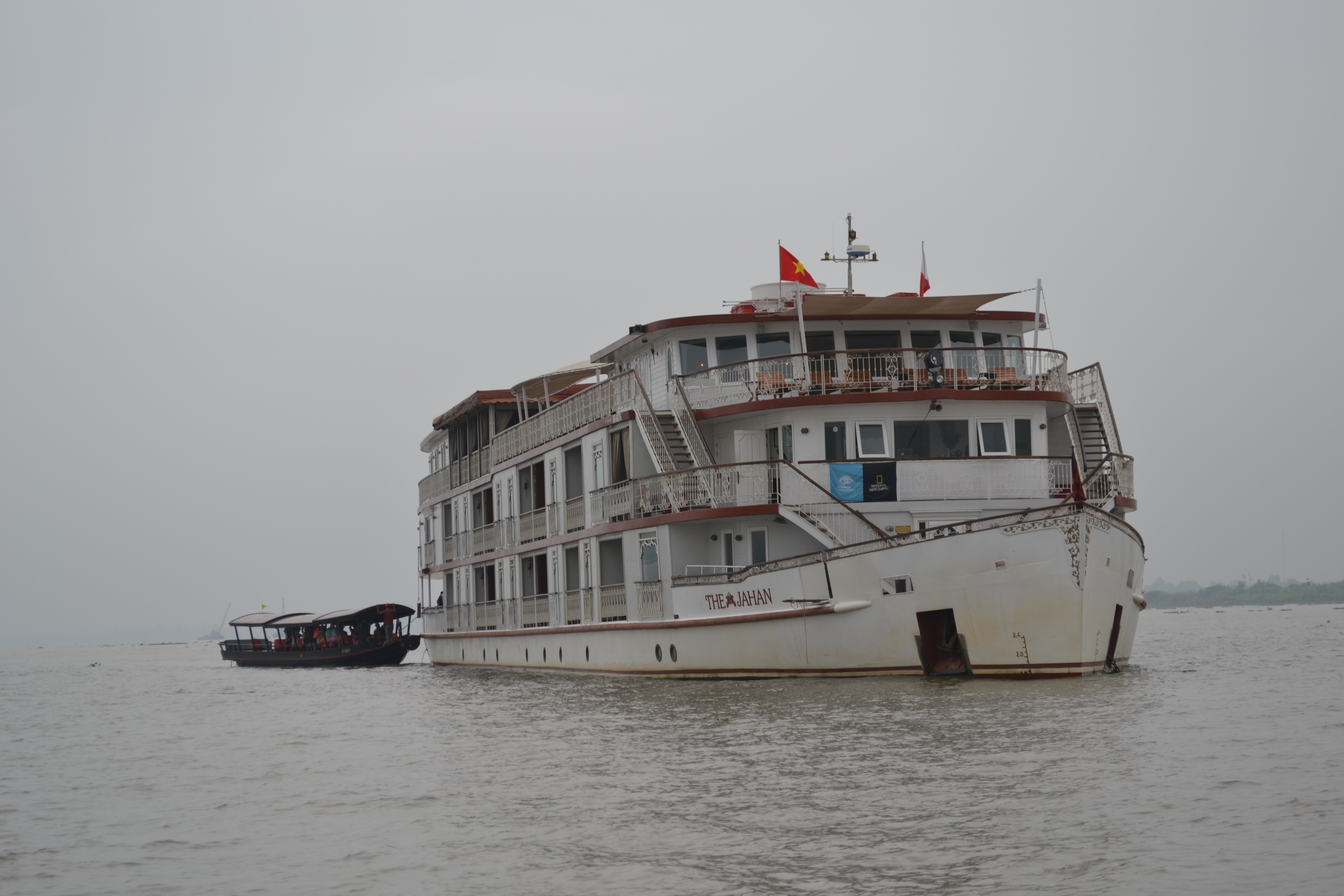
The Jahan underway.
look to the question. Although she was good-looking (you have to search a long time to find a young Vietnamese woman who isn’t), she must have been desperate: every male head in our group was either bald or gray).
A final note: Today, I had to sing for my passage by giving the first of my lengthy presentations. I was a bit nervous. Did 45 tourists on an exotic and very expensive holiday want to listen to a rather grim account of the fall of Saigon? To my relief, my war story came off fairly well, and I rewarded myself with a Bombay martini that evening. The second address is scheduled for tomorrow, shortly before we’re due to cross into Cambodia.
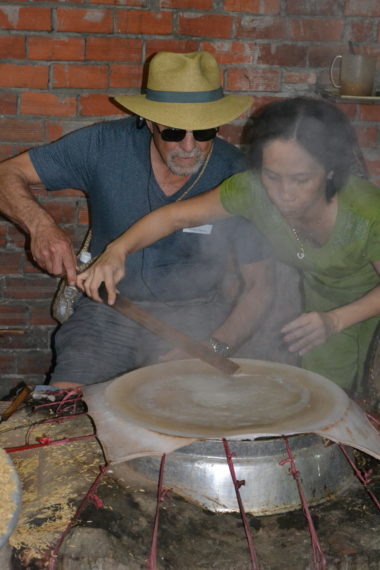
Me, attempting to make rice paper. I flunked.
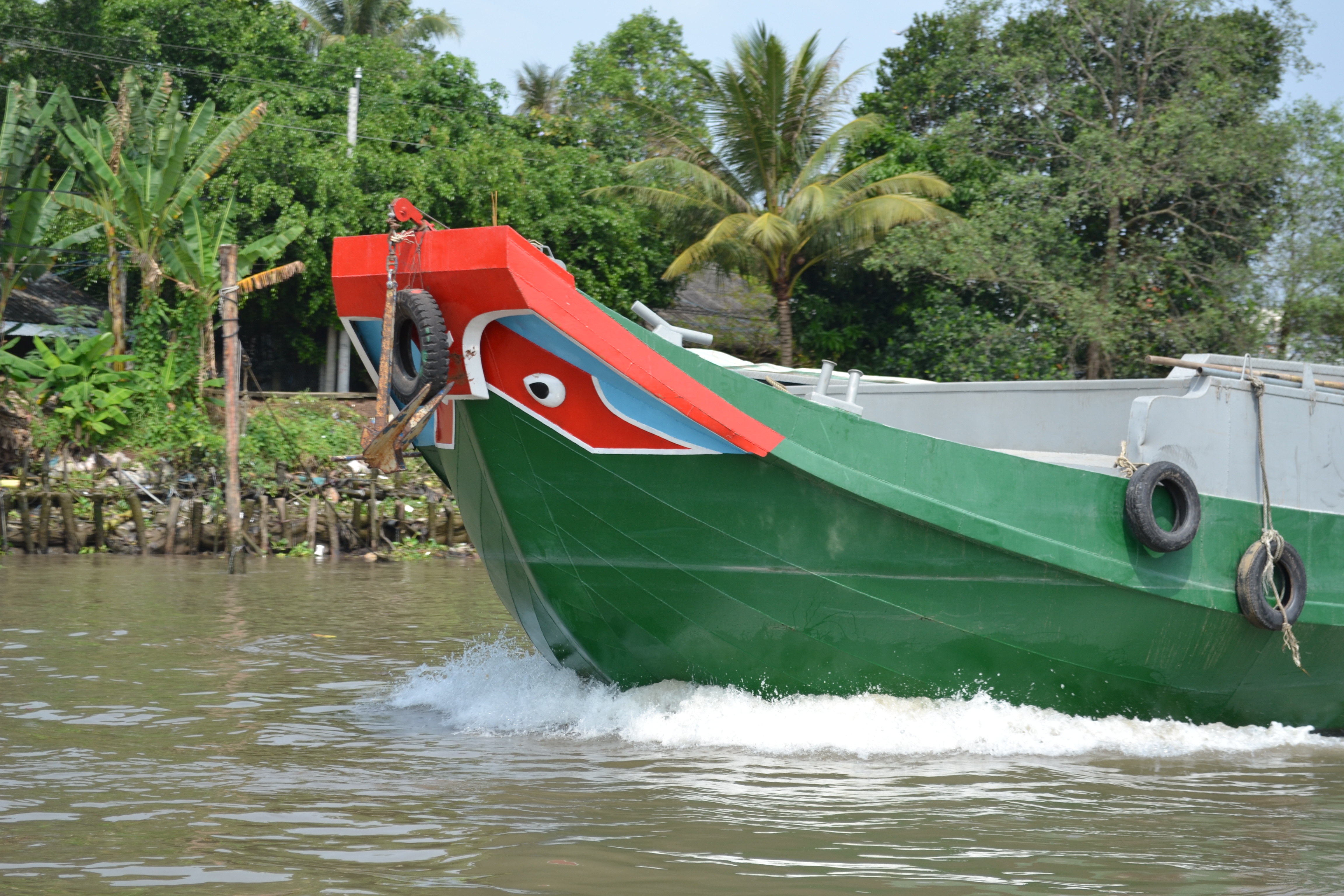
An “Eye” fishing boat on the Mekong
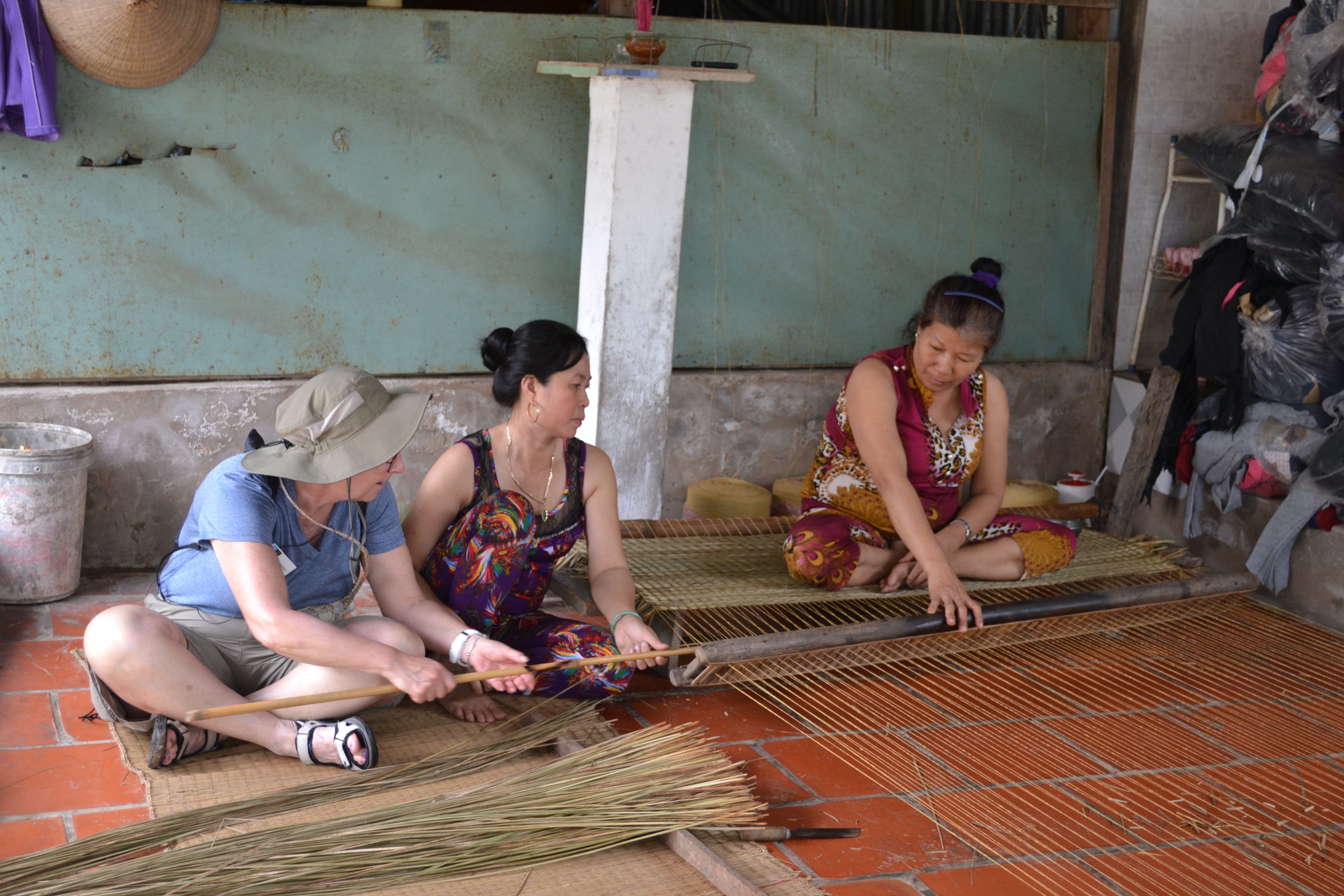
Weaving a reed mat. Jahan guest Cathy Nachman learning the craft.


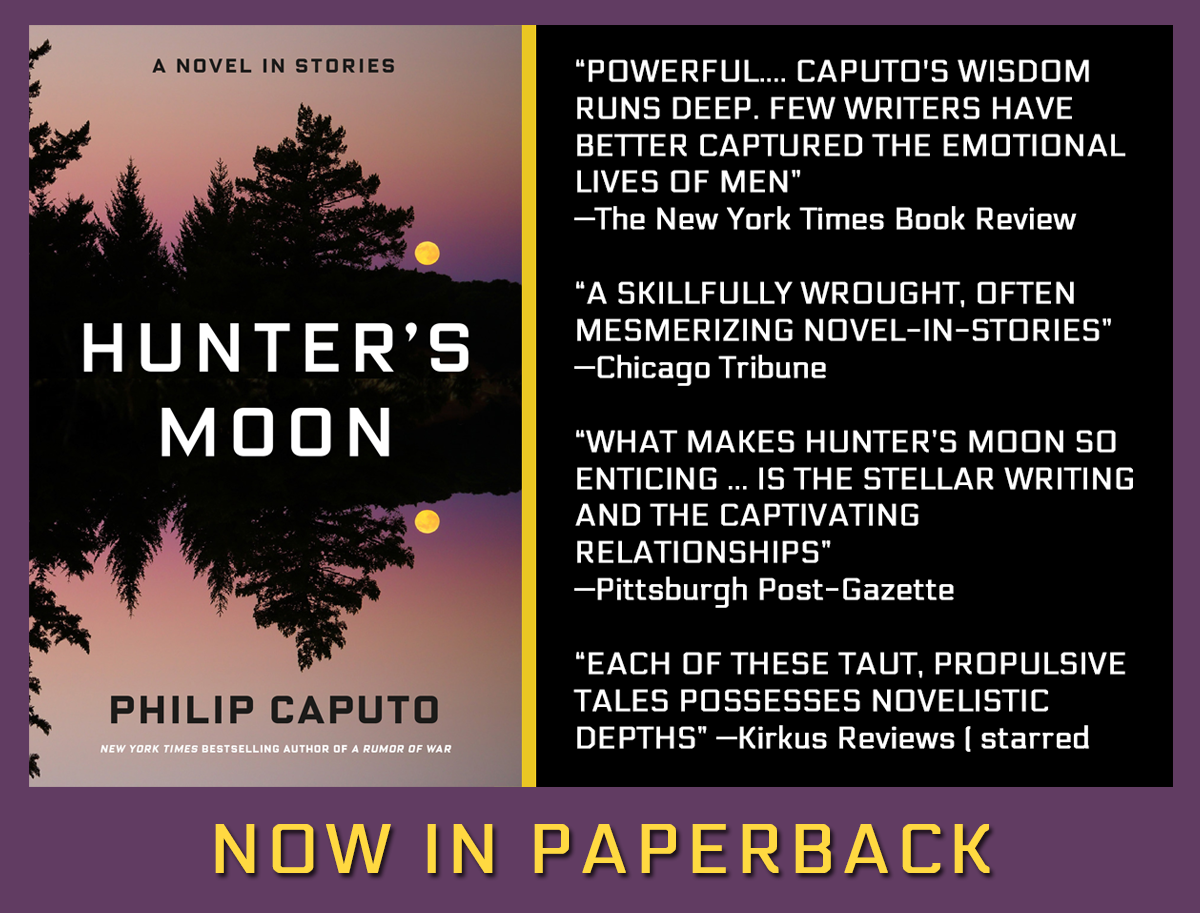
Phil, you look quite debonair in that Panama (?) hat and goatee.
Loving your story so far. Is there more to come?
Yes.